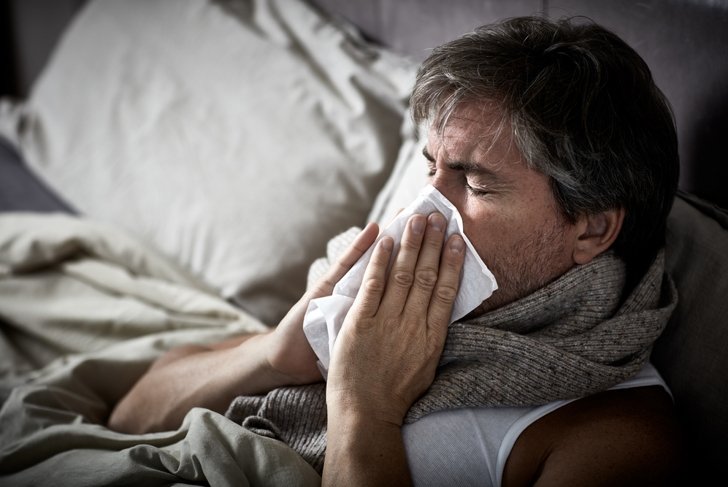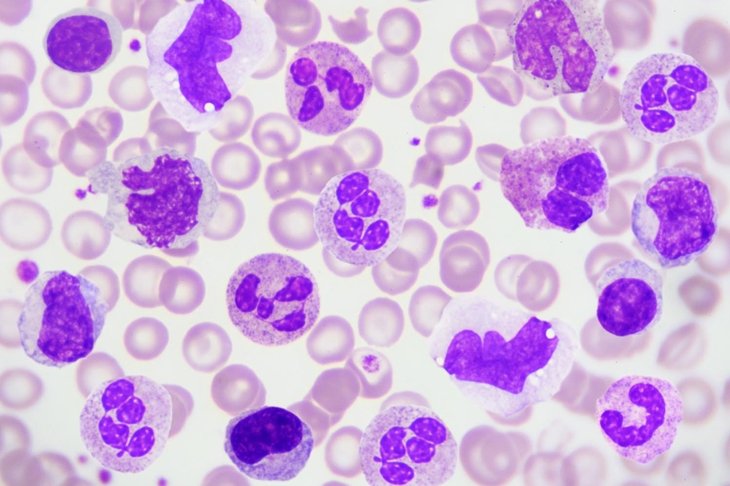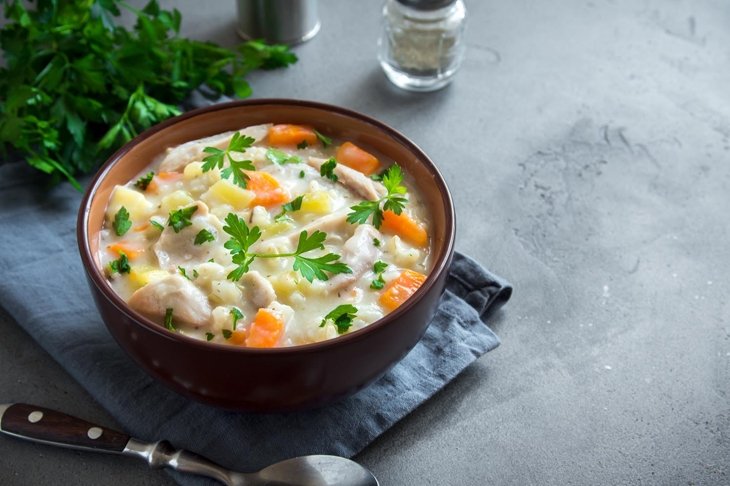
“Don’t go outside,” my grandmother scolded. “It’s wet. You’ll get sick!” As wise as she is, that’s not quite how the cold and flu viruses work. Let’s break it down, cough by cough, and examine which natural treatments for colds and flu are most effective.

01
Is getting sick every year inevitable?
Every fall, I break out my arsenal of vitamins, determined to finally make this year the year I don’t succumb to whatever bug is circulating through the office. And without fail, I find myself in bed with a dreaded case of “man cold.” You know—that dreaded virus that turns any grown man into a sniffling hot mess.
So I called Dr. Thomas S. Ahrens, a fellow of the American Academy of Nursing. As an international researcher, he has authored five books and more than 100 research papers. You could say he knows a thing or two about how these viruses work.
02
What’s the difference between a cold and flu?
 Walk down the aisles of any drugstore and you’ll see product after product marketed for both colds and flu. But these two illnesses are hardly twins.
Walk down the aisles of any drugstore and you’ll see product after product marketed for both colds and flu. But these two illnesses are hardly twins.
“It’d be like grouping all humans together as identical,” explains Ahrens. “While the cold and flu are both caused by viruses, they’re two very different viruses with different actions.”
With the common cold, you’ll have symptoms such as
- a runny nose
- sneezing and coughing
- a sore or irritated throat
- body aches
If you have the flu, you’ll experience
- a fever and chills
- fatigue
- body aches
- coughing
03
Which is worse though?
 “The muscle aches and pains are typically much greater with the flu,” warns Ahrens. “You may have a sore throat with both, but it’ll be worse with a cold. And you might feel a little more congested and stuffy with a cold. However, in general, you’ll just feel much worse with the flu. Unless you’re a man—we complain a lot no matter what.”
“The muscle aches and pains are typically much greater with the flu,” warns Ahrens. “You may have a sore throat with both, but it’ll be worse with a cold. And you might feel a little more congested and stuffy with a cold. However, in general, you’ll just feel much worse with the flu. Unless you’re a man—we complain a lot no matter what.”
04
Is there really a cold and flu season?
 Sort of. Contrary to popular opinion, there’s not really a cold season. Even summertime is not safe. However, there is a flu season.
Sort of. Contrary to popular opinion, there’s not really a cold season. Even summertime is not safe. However, there is a flu season.
“The flu season typically runs from November to May,” explains Ahrens. During this time, the air is colder and drier, which helps the flu virus survive longer and spread further.
Regardless of the date, these viruses happily take any opportunity they can to invade our bodies.
05
How do we get it?
 “Transmission is mostly via contact,” says Ahrens. “The virus lands on a surface, but can’t live for very long—typically just a couple of hours. But if they’re on something moist, like a wet towel, they can last even longer, and droplets in the air can hang around for hours. So if someone in line at a restaurant sneezes into the air, and you walk in 30 minutes later to pick up your takeout, you can inhale the virus.”
“Transmission is mostly via contact,” says Ahrens. “The virus lands on a surface, but can’t live for very long—typically just a couple of hours. But if they’re on something moist, like a wet towel, they can last even longer, and droplets in the air can hang around for hours. So if someone in line at a restaurant sneezes into the air, and you walk in 30 minutes later to pick up your takeout, you can inhale the virus.”
Of course, we can’t go around holding our breath all day. But we can wash our hands regularly. “Chances are, you touched something recently that’s contaminated,” says Ahrens. “To reduce your risks, avoid touching your mouth and nose, and wash your hands regularly.”
06
How does your body respond?
 The minute a virus attacks you, your body starts building its army.
The minute a virus attacks you, your body starts building its army.
“Our immune system is so good, we’re more in danger from it than we are of our invaders,” says Ahrens. Your normal white blood count is about 5,000 to 10,000 per cubic meter. When you get sick, this number skyrockets as your body produces more white blood cells to respond to the cold and flu.
These cells immediately go to work, vanquishing the enemy. And that’s why we get all those annoying symptoms. “Symptoms like a stuffy nose or fever are actually the result of your immune system going to work,” says Ahrens.
07
What’s a normal cold and flu duration?
 If you’re healthy, a cold will last anywhere from seven to 14 days, while a flu will dissipate in seven to 10 days. “Let it run its course,” says Dr. Ahrens. “And remember, if you’re showing symptoms, you might still be contagious.”
If you’re healthy, a cold will last anywhere from seven to 14 days, while a flu will dissipate in seven to 10 days. “Let it run its course,” says Dr. Ahrens. “And remember, if you’re showing symptoms, you might still be contagious.”
By the numbers
There are three broad types of the flu, and more than 200 versions of the cold virus. “That’s why we can’t make a cold vaccine,” says Ahrens. “But researchers are working on a universal flu vaccine.”
08
Should you work out when you’re sick?
 Gentle exercise may help white blood cells circulate your body more efficiently, and your increased body temperature may also help your body fight off an illness.
Gentle exercise may help white blood cells circulate your body more efficiently, and your increased body temperature may also help your body fight off an illness.
A rule of thumb is to exercise when symptoms are above the neck and to limit exercise when symptoms are below the neck, or when fever, diarrhea, or vomiting are present. Keep it lower intensity and non-taxing so you reap the benefits—without the drain of an intense, prolonged session.
09
Chicken soup: legit prescription or folk remedy?
 Listen to momma. Her old-fashioned chicken soup may have potent anti-inflammatory properties to help ease cold and flu symptoms. Used for centuries to soothe symptoms associated with the cold and flu, chicken soup’s healthy reputation may stem from the many nutrient-dense ingredients it contains. These ingredients often include onions, carrots, garlic and, of course, chicken.
Listen to momma. Her old-fashioned chicken soup may have potent anti-inflammatory properties to help ease cold and flu symptoms. Used for centuries to soothe symptoms associated with the cold and flu, chicken soup’s healthy reputation may stem from the many nutrient-dense ingredients it contains. These ingredients often include onions, carrots, garlic and, of course, chicken.
Chicken is an excellent source of the compound carnosine. Studies have found that carnosine may help to fight off viral infections like the flu by stopping it from replicating and spreading inside cells. The comforting warm broth of this soup may also help loosen mucus to ease congestion and relieve a sore throat.
10
Can natural treatments for cold and flu help?
 When it comes to supplements, garlic, echinacea, and elderberry extracts have been shown to exert potent antiviral effects.
When it comes to supplements, garlic, echinacea, and elderberry extracts have been shown to exert potent antiviral effects.
A randomized trial of 120 adults found that aged garlic extract reduced the severity and duration of cold and flu symptoms. Garlic contains allicin, which has been shown to kill viruses such as rhinovirus (which causes many common colds) and parainfluenza virus.
A randomized trial of 473 patients with early flu symptoms found that a daily combo of echinacea and elderberry extract taken for 10 days was as effective as the prescription flu medication oseltamivir for reducing the duration of illness and had fewer side effects.
Finally, a meta-analysis including 180 participants revealed that black elderberry was found to “substantially reduce upper respiratory symptoms.” Authors concluded that elderberry may be a “potentially safer alternative to prescription drugs for routine cases of the common cold and influenza.”



